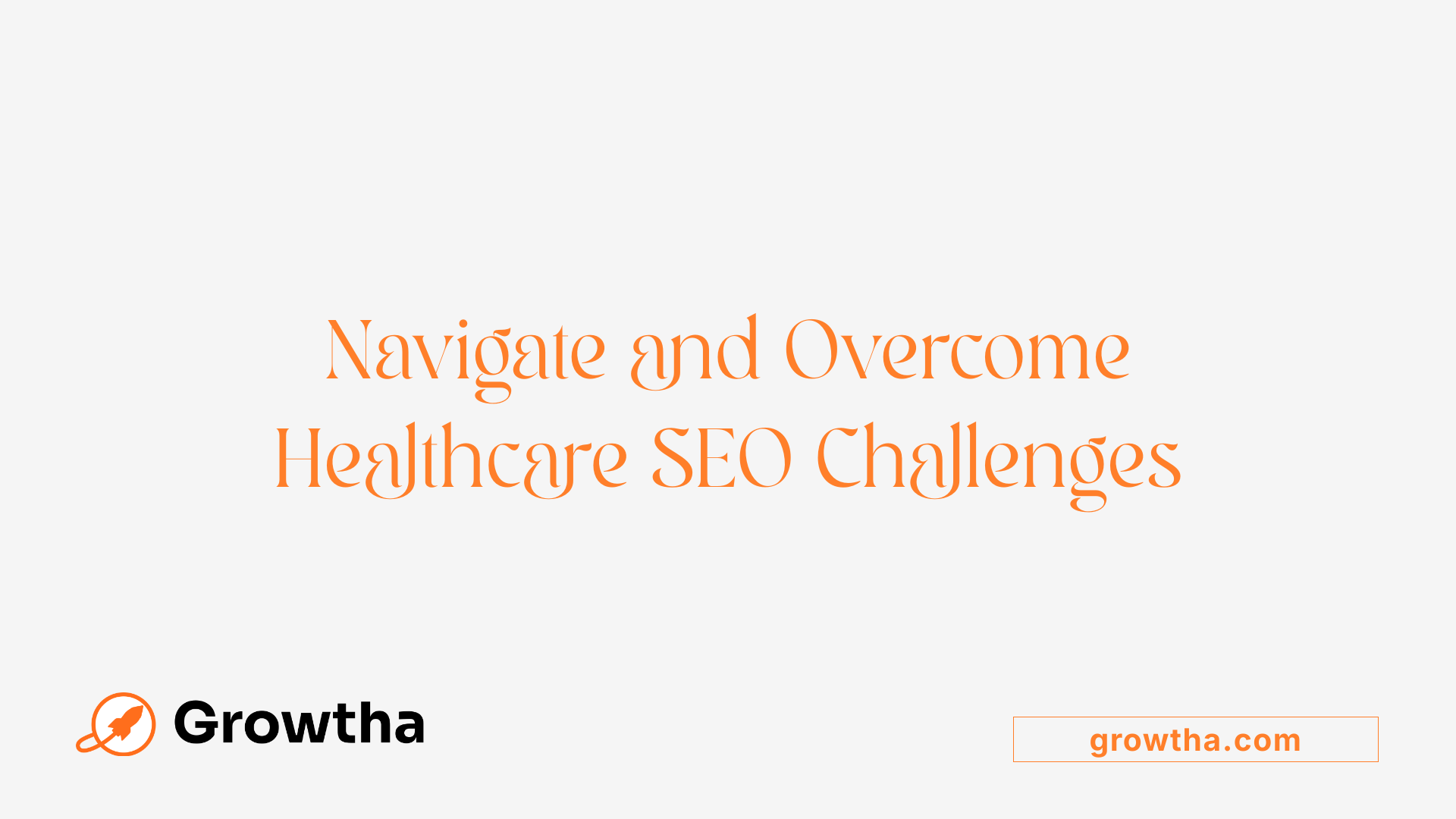The Role of Blogging in Healthcare SEO
Unlocking the Power of Blogs for Better Healthcare SEO


The Role of Blogging in Healthcare SEO
Introduction to Healthcare Blogging and SEO
In the digital age, having a strong online presence is vital for healthcare practitioners and organizations. Healthcare blogging has emerged as a pivotal component of SEO strategies, enhancing visibility, credibility, and patient engagement. This article explores the integral role of blogging in healthcare SEO, detailing effective practices, future trends, challenges, and its influence on online reputation and marketing.
The Significance of Blogging in Healthcare SEO
Is blogging a part of SEO?
Yes, blogging forms a vital element of search engine optimization (SEO) strategies within healthcare. Regular, targeted blog posts supply search engines with fresh, high-quality content that they favor when ranking websites. This continual flow of new material helps maintain and improve a website’s visibility on platforms like Google.
Through strategic inclusion of relevant keywords in blog titles, headings, and alternative text, blogs enhance a website’s chances of ranking highly for those search terms. Furthermore, blogs allow for internal linking to related pages, which creates an organized site structure that search engines can crawl more efficiently.
Blogs also serve as a platform to target long-tail keywords and specific local search terms, enabling healthcare practices to appear in detailed, geographically relevant search results. The regular publication of content signals activity and relevance, both key factors for improved search rankings.
Additionally, high-quality blog content can attract backlinks from other authoritative healthcare websites or industry blogs, further bolstering a site’s SEO authority.
In summary, blogging supports on-page SEO through optimized content and off-page SEO through link-building and activity signaling. It is an indispensable component of a comprehensive healthcare SEO strategy that increases online presence and attracts potential patients.
How Blogging Enhances Online Visibility and Search Rankings

How does blogging improve online visibility and search rankings in healthcare?
Blogging plays a crucial role in elevating a healthcare practice’s online presence. Regularly updating a website with fresh, relevant, and keyword-optimized content helps attract organic traffic from search engines like Google. These blog posts answer common health questions, explain treatments, and share patient success stories, which boosts the site’s authority and relevance.
Personal patient blogs or medical journals contribute engaging content that addresses real concerns, encouraging visitors to stay longer and explore more. This engagement signals to search engines that the site is valuable and trustworthy, leading to higher rankings.
Moreover, effective healthcare blogging provides insight into patient preferences and behaviors. By analyzing comments and feedback, providers can tailor their communication and improve service delivery.
Including peer support and patient stories fosters community and encourages sharing, which increases backlinks and social signals—all factors that strengthen SEO. While managing privacy and maintaining factual accuracy is essential, these strategies significantly enhance search visibility.
Why are regular, high-quality blogs important for SEO success?
Consistency matters greatly for SEO. Regular posting of quality blogs ensures that search engines continually find new content to index, signaling an active and authoritative website. This relevancy keeps a practice competitive in local and niche search results.
High-quality content that is informative, well-researched, and tailored to patients builds trust and positions the provider as an industry leader. When readers find the content useful, they are more likely to revisit the site and share it with others.
Furthermore, valuable blogs attract backlinks from authoritative health-related websites, which boosts the domain’s authority and, consequently, search rankings.
Continued investment in comprehensive, evidence-backed educational content encourages longer site visits and increases the chances of appearing in featured snippets and 'People Also Ask' sections—critical components for improving visibility.
Impact of blogging on search rankings
| Aspect | Effect | Details |
|---|---|---|
| Fresh Content | Boosts rankings | Updates indicate activity to search engines |
| Keyword Optimization | Improves relevance | Integrating relevant healthcare keywords naturally |
| Backlink Building | Enhances authority | Sharing blog content with communities and industry sites |
| User Engagement | Signals trust | Comments, shares, and time spent on site |
| Technical SEO Support | Complements efforts | Internal links, meta tags, site speed, mobile-friendliness |
Patient trust and engagement through blogs
Blogs are excellent tools for building credibility and trust. By providing educational content and answering common questions, healthcare providers show transparency and expertise.
Trust is further reinforced when blogs feature testimonials, share factual health information, and maintain privacy when needed.
Engagement is elevated when blogs are easy to read, include multimedia like videos and infographics, and are tailored to different patient personas. Content that addresses specific stages of a patient’s healthcare journey—from awareness to decision—can influence their health choices.
Use of blogs for promoting services and treatments
Healthcare clinics often use blogs to highlight new services, advanced procedures, or groundbreaking treatments. Optimized content helps these highlights rank highly on search results, attracting targeted traffic.
For example, a practice offering a new minimally invasive surgical technique can create detailed blog pieces that explain benefits, recovery times, and patient outcomes. Including relevant keywords and local SEO strategies ensures potential local patients discover these innovations.
Additionally, using blogs to showcase success stories and breakthroughs humanizes the practice, making it more relatable and trustworthy.
In summary, effective healthcare blogging increases online visibility, improves search rankings, builds patient trust, fosters engagement, and strategically promotes services—all vital components for growth and reputation enhancement in today’s digital age.
Best Practices for Effective Healthcare Blogging

What are best practices for effective healthcare blogging?
Effective healthcare blogging requires a focus on creating patient-centered, trustworthy content. High-quality articles should be evidence-based, accurate, and clear, addressing common concerns with empathy and simplicity. This approach helps patients feel informed and valued, fostering trust and engagement.
SEO optimization plays a critical role in increasing a blog's visibility. Incorporating relevant keywords naturally into headings, meta descriptions, and throughout the content helps search engines understand the topic and rank the pages higher in search results. Structured formatting with clear headings and concise paragraphs makes content more accessible for readers.
Visual and multimedia elements significantly enhance audience engagement. Including images, infographics, and videos can simplify complex medical information, making it more understandable. Visuals also help break up text, making the blog more inviting and easier to navigate.
Engagement strategies involve framing content in a conversational tone that resonates with diverse audiences. Regularly updating the blog with current healthcare topics demonstrates expertise and keeps readers returning for the latest information. Citing credible sources underpins the authority of the content, while compelling calls to action, like encouraging patients to schedule appointments or explore additional resources, drive further engagement.
To maximize impact, practitioners should align content with patient needs at various stages of their health journey—awareness, consideration, and decision-making. By understanding the target audience, incorporating relevant keywords, and maintaining a consistent posting schedule, healthcare providers can build a trusted online presence.
Furthermore, responsive, mobile-friendly website design improves user experience, ensuring patients can access content seamlessly on any device. Regular content audits and updates maintain accuracy and relevance, essential for SEO and patient education.
In summary, effective healthcare blogging balances quality content creation standards, SEO techniques, visual integration, and audience engagement strategies. This holistic approach not only enhances online visibility but also establishes a practice as a reliable health information resource—building trust, attracting more patients, and ultimately supporting better health outcomes.
| Aspect | Best Practices | Details |
|---|---|---|
| Content Standards | Evidence-based, Clear, Empathetic | Prioritize accuracy, readability, and compassion |
| SEO Techniques | Relevant Keywords, Structured Formatting, Meta Optimization | Use keywords naturally, organize content with headers, optimize meta tags |
| Visual Elements | Infographics, Videos, Images | Simplify complex info, increase engagement |
| Audience Engagement | Conversational Tone, Call to Action, Updates | Connect authentically, encourage interaction, keep content fresh |
Staying updated with current SEO trends like Core Web Vitals and voice search, along with understanding audience needs, ensures blogs remain relevant and impactful over time.
Healthcare Blogging and Patient Engagement

How does healthcare blogging enhance patient engagement and authority building?
Healthcare blogging plays a vital role in increasing patient engagement by offering educational, transparent, and accessible content that addresses common health concerns. When blogs present accurate, up-to-date, and easy-to-understand health information, they help patients better understand their conditions and treatment options. This accessibility encourages patients to interact with the content, ask questions, and seek further information.
Regularly publishing high-quality blog posts also positions healthcare practices as credible and knowledgeable authorities in their respective fields. By sharing insights, research updates, and thought leadership articles, healthcare providers reinforce their expertise, which builds trust among their audience. Over time, this trust cultivates loyalty, encourages repeat visits, and transforms casual readers into committed patients.
Furthermore, blogging enhances a practice's search engine visibility. Well-optimized content that incorporates relevant keywords and local SEO tactics makes it easier for prospective patients to find the practice online. This increased visibility not only attracts new patients but also keeps existing ones engaged through continuous, valued communication.
Sharing personal stories and patient testimonials through blogs creates emotional connections and fosters a sense of community. These narratives humanize healthcare providers, making the practice more relatable and trustworthy. Additionally, storytelling techniques that highlight successful treatment journeys empower other patients by providing hope and motivation.
Blogs also serve as effective platforms for fostering interaction via comments, social sharing, and email subscriptions. Practice owners can use these channels to nurture ongoing relationships, share helpful tips, and invite feedback.
Moreover, healthcare blogging supports practice growth by integrating content strategies with social media marketing and email campaigns, turning engaged readers into active participants. Through educational posts, tips, and FAQs, practices can address patient questions proactively, reducing anxiety and improving health literacy.
In summary, healthcare blogging significantly enhances patient engagement by providing trustworthy information, establishing authority in the field, and creating emotional connections. It supports a practice’s digital reputation, encourages ongoing communication, and ultimately fosters a loyal and well-informed patient community.
Use of Multimedia for Engagement
Incorporating multimedia elements such as videos, infographics, and interactive tools into healthcare blogs boosts engagement levels. Videos offer visual explanations of complex medical topics, making information more digestible and appealing. Infographics simplify data and scientific concepts, increasing shares and backlinks that further improve SEO.
Interactive tools like quizzes, symptom checkers, or calculators engage users actively, encouraging longer site visits and repeated interactions. These features not only educate but also collect valuable patient data that can customize future content or services.
Together, appealing visual and interactive content widen the reach and impact of healthcare blogs, making them indispensable tools for modern patient engagement and authority building.
Overcoming Challenges in Healthcare Blogging and SEO

What are the challenges associated with healthcare blogging and SEO?
Healthcare blogging and SEO are powerful tools to enhance online visibility and patient engagement, but they come with a variety of challenges that organizations need to navigate.
One of the most significant hurdles is maintaining strict adherence to healthcare regulations like HIPAA. Privacy concerns require careful management of patient data, especially when sharing success stories or testimonials. To avoid legal issues, content must be thoroughly vetted for compliance without sacrificing educational value.
Another common challenge lies within understanding and adapting to complex SEO algorithms. Search engines continually update their ranking factors, making it difficult for healthcare providers to stay ahead. Developing effective SEO strategies involves mastering keyword research, schema markup, and technical optimizations such as website speed and mobile responsiveness.
Organizations often grapple with internal limitations, including technical site issues like broken links, slow loading speeds, and poor site architecture. Organizational biases or resource constraints may hinder consistent, high-quality content creation or hinder efforts to optimize content for relevant audience personas.
Adapting to changing market dynamics and search behaviors also proves difficult. The rise of telehealth, digital health tools, and increased health-related online searching mean healthcare providers must continuously update their approach. Leveraging analytics tools helps identify evolving patient needs and preferences, which can inform content and SEO adjustments.
Managing a social media presence adds further complexity. While social media enhances engagement, it can also introduce risks such as negative reviews, misinformation, and privacy breaches. Responding to reviews, moderating content, and safeguarding patient information demand strategic planning and dedicated resources.
Addressing misinformation remains a significant concern, especially during health crises or prevalence of false medical claims online. Healthcare organizations must proactively provide accurate, accessible information and correct false narratives to maintain trust.
Finally, resource allocation is an ongoing concern. High-quality content production, technical website upkeep, strategic social media activities, and continuous SEO optimization require an investment of time, expertise, and finances.
In summary, succeeding with healthcare blogging and SEO requires balancing regulatory compliance, technical competence, high-quality content, and effective social media strategies in a rapidly changing digital environment. By thoroughly understanding these challenges, healthcare providers can develop robust, compliant, and engaging digital content that drives trust and improves their online presence.
Future Trends and Lasting Impact of Healthcare Blogging

What is the future trend and significance of blogging in healthcare SEO?
The future of blogging in healthcare SEO will be heavily influenced by emerging technological innovations such as artificial intelligence (AI), machine learning, and voice search optimization. These advancements will allow content to become more personalized, predictive, and conversational, ensuring that patient queries and needs are addressed more effectively.
In addition to technological shifts, the use of multimedia content—like videos, infographics, and interactive tools—will become central to patient engagement strategies. Such formats not only make complex health information more accessible but also boost search rankings by increasing time spent on pages and sharing potential.
Prioritizing mobile friendliness and local SEO will remain critical, as many patients seek quick, nearby healthcare information through their smartphones. Clear focus on user experience and accessibility will help practices attract more local patients. Furthermore, maintaining strict compliance with health regulations like HIPAA, and emphasizing principles such as E-A-T (Expertise, Authoritativeness, Trustworthiness), will ensure that healthcare blogs uphold credibility.
This evolution signifies that healthcare blogging will continue to be an essential tool for online visibility, building patient trust, and staying competitive amidst a digitized healthcare landscape. Regular updates, innovative content types, and advanced SEO strategies will drive growth and reputation in the coming years.
How does healthcare blogging contribute to online reputation and marketing efforts?
Healthcare blogging plays a pivotal role in shaping online reputation and enhancing marketing outcomes for medical practices and healthcare companies. By consistently producing well-researched, valuable content, providers position themselves as trusted authorities. This authoritative voice boosts search engine rankings, making their clinics or services more visible to potential patients.
Moreover, blogs foster transparency and showcase expertise through patient success stories, service updates, and educational insights. Such content builds trust and reassures patients about the quality of care provided, encouraging loyalty and word-of-mouth referrals.
In the realm of reputation management, blogs help practices control their narrative online. Regularly updated, positive content can outweigh negative reviews and misinformation, influencing public perception positively.
This strategic use of healthcare blogs supports broader marketing efforts by attracting new audiences, improving patient retention, and differentiating the practice within a competitive market. Additionally, integrating blogs with reputation management activities—such as encouraging patient reviews and responding to feedback—further amplifies the online image.
In summary, healthcare blogging is an instrumental component of digital marketing, fostering trust, enhancing visibility, and consolidating a practice’s reputation in the digital space.
Final Thoughts on Healthcare Blogging and SEO Strategy
Incorporating blogging into healthcare SEO strategies is no longer optional but essential for practices aiming to thrive in a competitive digital environment. Well-executed blogs increase online visibility, build authority, and engage patients effectively. By adhering to best practices and staying abreast of technological advances and regulatory requirements, healthcare providers can leverage blogs to improve search rankings, enhance patient trust, and support overall marketing efforts. As the future of healthcare SEO continues to evolve with AI, multimedia, and local SEO innovations, healthcare blogging remains a vital tool for sustainable growth and patient empowerment.
References
- The Importance of Blogging in Healthcare Content Marketing
- Pharma Content Marketing: The Power of Blogging and SEO
- The Power of Blogging: Elevating Your Healthcare Practice's Online ...
- 4 Things SEO Healthcare Bloggers Should Know | Sequence Health
- The Benefits of Blogging for Your Medical Practice - MedCoShare
- Why Is SEO for Healthcare Websites Important? - TBH Creative Blog
- How to Use Content Marketing and SEO to Grow Medical Practice
- Healthcare Content Strategy: Balancing Patient Care and SEO in ...
- Healthcare SEO Strategy To Grow Your Medical Practice - Blog
- How Healthcare Blogs Transform Patient Education







